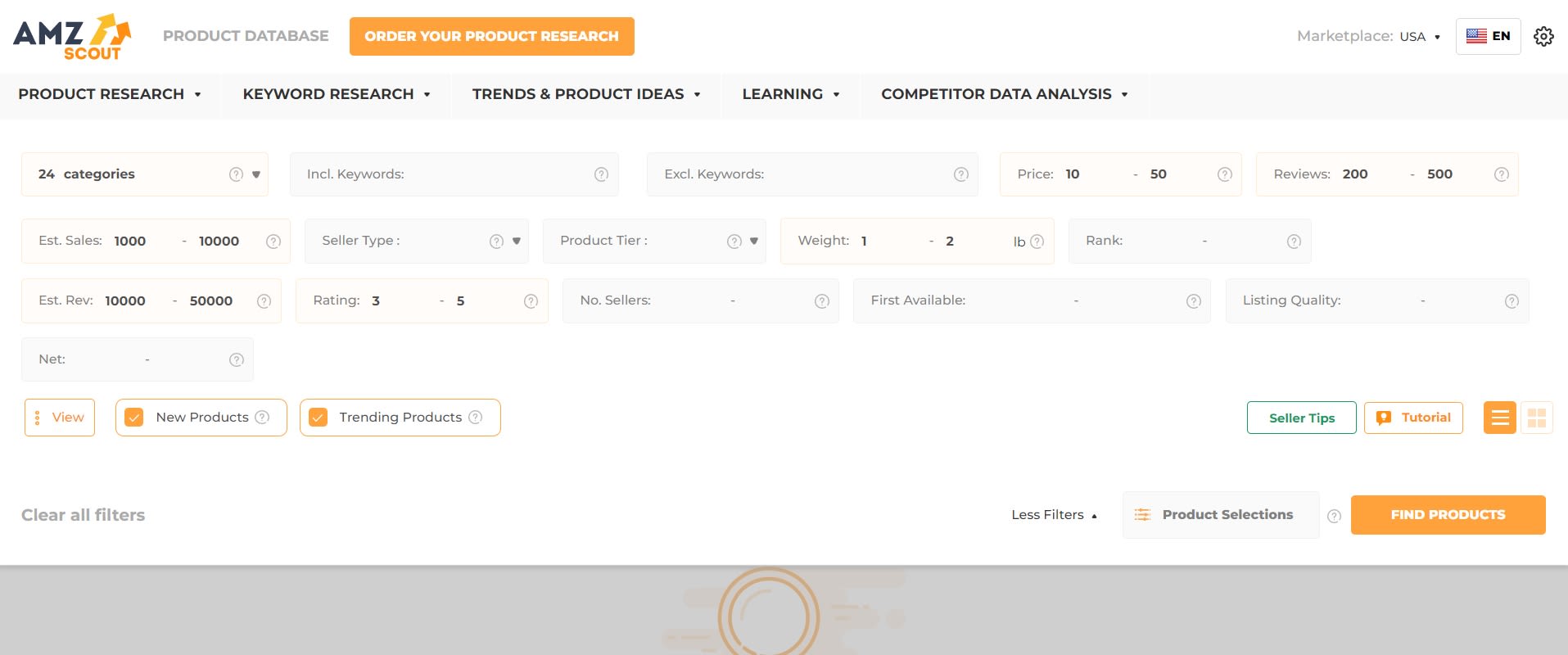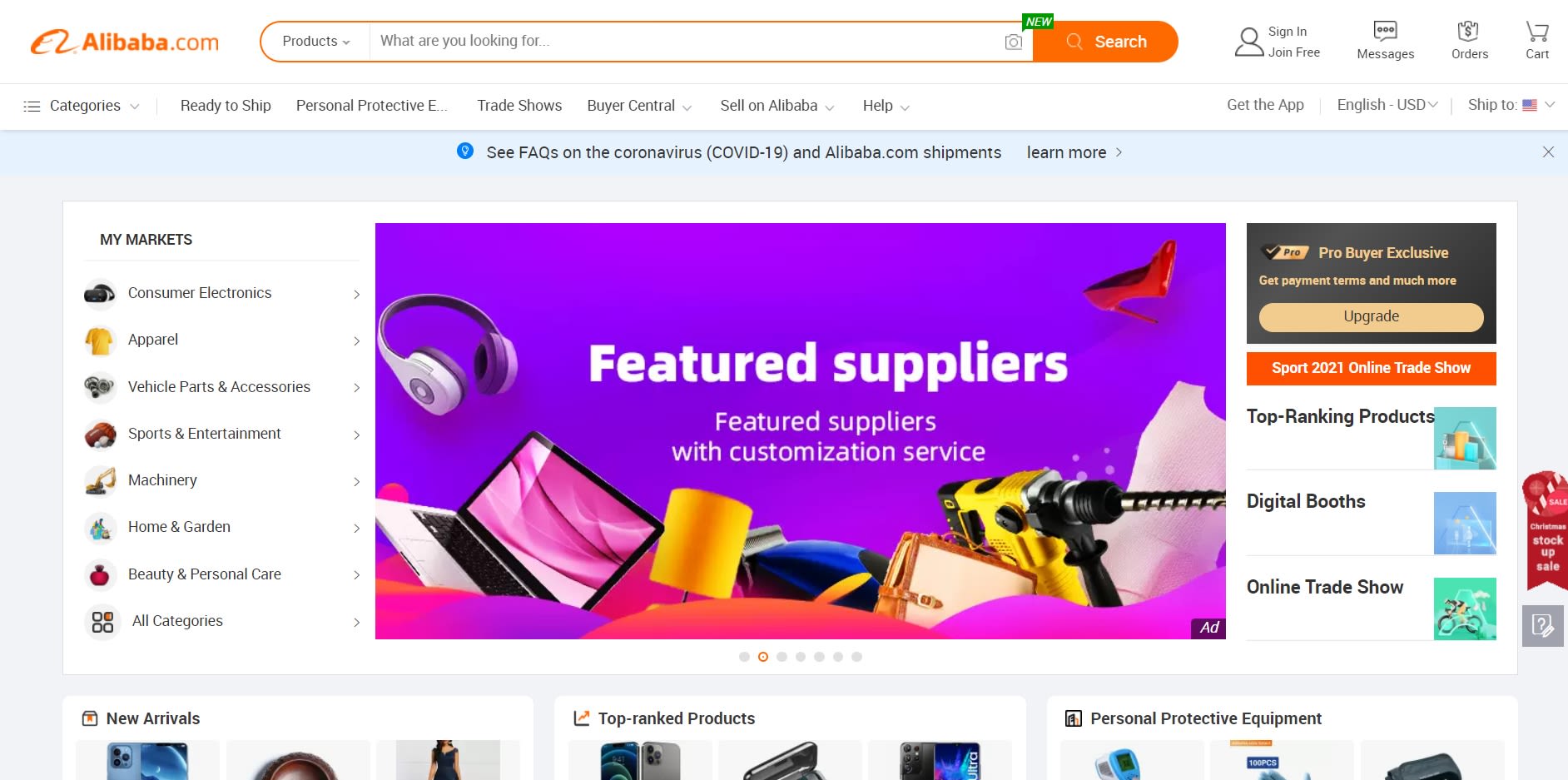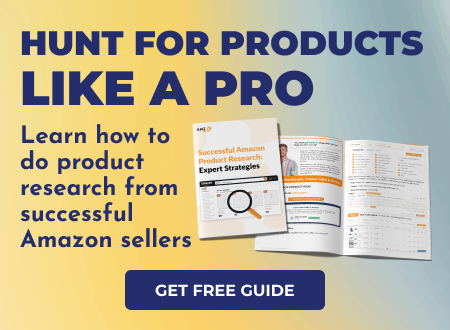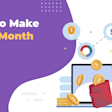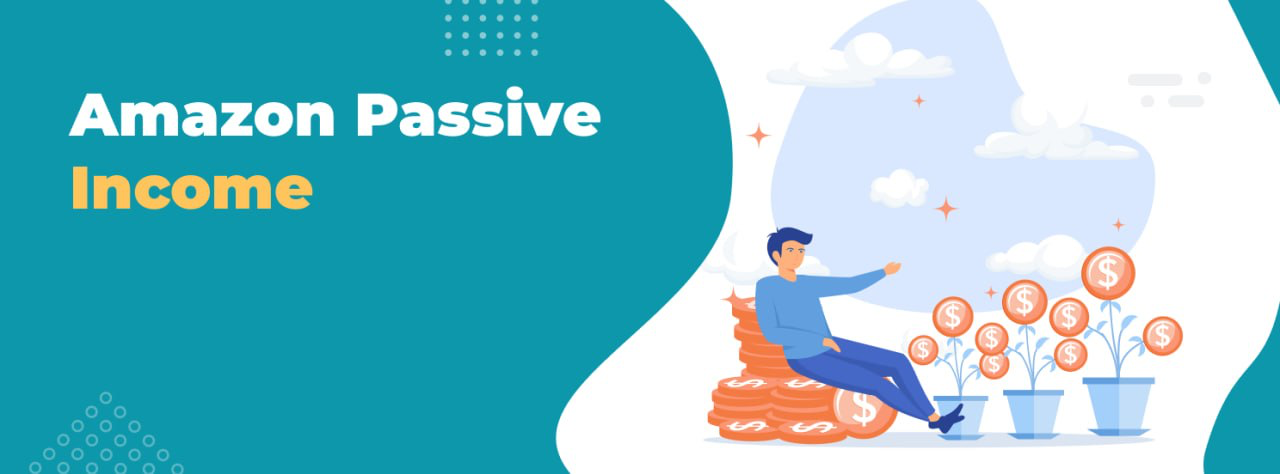
A Step-by-Step Guide to Generating Amazon Passive Income in 2025
When seeking an opportunity for a side hustle or launching a business, many entrepreneurs turn to Amazon. As a leading e-commerce platform, Amazon offers numerous ways to earn money online from home. When an Amazon business is set up correctly, it can generate residual income.
In this article, we'll explore how to make passive income on Amazon.
Table of contents
Top 6 Ideas for Making Passive Income on Amazon
There's no such thing as a completely passive income. For example, while selling photos on a stock website can generate income with each download, even while you sleep, you still need to exert effort upfront on tasks like taking photos, setting up an account, and finding a photo location. Automating your business processes can gradually ease this effort over time, though some initial work is still necessary.
On Amazon, people can achieve passive income by selling products or offering digital items and services. Each business model offers unique opportunities for scalability and profitability. Let’s dive into their characteristics so you can choose the best fit.
1. Amazon FBA
Amazon FBA is the most profitable way to make money on Amazon because selling high-margin products can yield significant profits. You send your products to Amazon's FBA centers, and Amazon takes care of order fulfillment and delivery to customers, while you pay Amazon related fees for storage and fulfillment services.
Even though this venture won't be completely passive, automating your processes or hiring a manager to keep an eye on your stock levels and prevent running out of inventory can result in a more hands-off business. This method can potentially yield higher earnings compared to others.
There are three main steps to starting an Amazon FBA business. Let's review them below.
Step 1: Finding Profitable Products
Finding a promising product focuses your investment on items that are more likely to attract customers and generate sales. Doing so lays the groundwork for success by aligning your offerings with market demand and consumer preferences. In order to identify lucrative items to sell, consider using analytical tools to help you gather comprehensive data on product profitability and trending items.
One top choice for conducting this kind of analysis is the Product Database by AMZScout, which provides statistics on 600 million Amazon products. This tool helps sellers make informed decisions and find the best opportunities for their business.
Here's how to use this tool:
1. Go to the AMZScout Product Database. Start a free trial by entering your email address.
2. Apply filters to narrow down your search. Consider using the following filters:
Weight: Opt for items that weigh under 4 lb to minimize shipping costs.
Estimated number of sales: Set a target of at least 300 sales/month to ensure a stable revenue stream.
Category: Select the category you are interested in.
Price range: Look for products with prices starting from $30 to ensure a profit margin that covers your expenses.
New and trending products: Enable this option to help you find top items, ensuring a substantial volume of sales.
3. Get your results. Click Find Products to generate a list of items that match your criteria.
You can assess whether a product fits your business model (whether you're reselling or launching your own brand), and consider factors such as estimated monthly revenue, ratings, number of reviews, and more to identify items worthy of further analysis.
This way, you save time on product ideas research. By automating this process, you can focus on other aspects of your business, enhancing your overall efficiency.
Step 2: Sourcing Products
Once you decide which products you want to sell, your next step is finding a reliable supplier. Consider exploring Alibaba, as this marketplace offers a wide range of suppliers and products at competitive prices. However, it's crucial to vet suppliers thoroughly before making any purchases. Check reviews carefully, search for potential scams, and review court databases for any legal issues.
It's recommended to contact 10-15 suppliers to get the best offer. For beginners, it might be challenging to negotiate terms, as this requires knowledge of potential business nuances. U.S.-based sellers can benefit from utilizing Sellerhook’s professional services. Their specialists will not only find a supplier for your product but also conduct a thorough check to ensure their reliability and get detailed quotes. Once you finalize these details, have your products sent to Amazon FBA centers.
Step 3: Listing and Marketing
In order to sell your products on Amazon, you need to upload them through your Seller Central account. Use professional, high-resolution images that showcase your product from multiple angles, and consider adding videos to provide a better understanding of the product and its benefits. Also, consider adding small gifts or participating in Amazon Vine to get more reviews. Monitor them carefully and be sure to reply to customers’ queries within 24 hours.
Additionally, it is necessary to analyze what your competitors are doing, especially regarding pricing strategies. Consider running PPC ad campaigns to drive traffic to your listing and enhance your product’s visibility. By applying these strategies consistently, you can stand out from the competition.
While Amazon FBA enables average sellers to earn approximately $10,000/month in passive income, it can be extremely beneficial for sellers to streamline their operations by outsourcing product research to analytical tools like AMZScout. Furthermore, leveraging professional services like Sellerhook can save sellers time and automate critical processes, enhancing efficiency and profitability.
2. Dropshipping on Amazon
Dropshipping is a business model that allows you to start out at a low cost. You import products from a supplier to your Amazon store through integration, and you only pay the supplier each time a product is sold. Apps can help to automate the process of order-forwarding, making this a stable stream of income once your product selection and business processes are set up.
Here's a step-by-step guide to starting a dropshipping business:
1. Find a profitable product to sell. Use tools like Dropshipping, Wholesale, and OA extensions to ensure whether a product is a match for this model. Look for the following criteria:
The product can be resold: It is not part of any gated categories or restricted products (like HAZMAT, branded, or private label items).
Competition is not too fierce: Ideally, there should be fewer than 20 sellers per listing to avoid tough competition and ensure that Amazon is not one of them.
The product is profitable: Calculate the item’s profitability and check the winning price of the Buy Box.
![banner]()
![banner]()
2. Get a dropshipping subscription: Before subscribing to import products to your store, check the following:
Ensure that the supplier is fully aware of Amazon's dropshipping guidelines (no branded packaging permitted).
Verify the frequency of stock replenishment and the availability of sizes and prices.
Review the shipping costs and delivery times, and ensure that the supplier can adhere to Amazon's packaging guidelines.
Choose a supplier with an automated app for seamless product imports and order fulfillment.
3. Import and market your products: Consider running PPC campaigns to drive traffic and boost sales.
While this approach can generate significant profits, it's crucial to utilize tools that can automate your business processes. This way, you can streamline operations, turning them into a profitable source of passive income.
3. Merch-on-Demand by Amazon
Offering print-on-demand services can also provide a source of hassle-free, passive income that lets you start without any initial investment. All you have to do is upload your artwork on Amazon, and you earn a commission whenever someone buys a product featuring your design. Amazon handles all aspects of printing, sending orders, and customer service, making it ideal for creative individuals without requiring any specific training or a license.
Here's how Amazon Merch-on-Demand works:
1. Set up an Amazon Merch-on-Demand account. Provide your personal and/or business information (such as bank account details and tax ID), which will be reviewed by Amazon within a few business days.
2. Select the type of product on which your design can be printed. There’s a wide variety of Amazon products from which to choose, including phone covers, shoes, bags, and more.
3. Upload your design. You can set your own selling price and even opt to have your design text translated into other languages.
4. Once you’re approved, Amazon will create the product page for your design. Each time someone purchases your product, Amazon will handle the printing and delivery, while you get a royalty.
Since earnings are based on royalties, profits with this business model can be modest. Regular market research is essential to identify top-performing products and design ideas. You also need to develop a strong marketing strategy in order to stand out from the competition.
4. Amazon Affiliate Program
The Amazon Affiliate Program allows you to earn commissions from sales made through the product links you share on your website or blog. If you wish to participate in the Amazon Affiliate Program, you should have at least 10 posts that are publicly accessible and feature original content that adheres to Amazon's guidelines.
After you register for the program, you can create affiliate links for Amazon products and integrate them into your blog posts, website pages, or social media channels. Once the links are live, they continue to generate income without requiring much ongoing effort on your part. Every time a visitor clicks on your affiliate link and makes a purchase, you earn a commission. Keep in mind that commission rates vary depending on the product category.
Affiliate marketing is a great way to generate passive income, but it depends on having an established audience, which can take significant time and effort to develop.
5. Amazon Influencer Program
The Amazon Influencer Program is similar to the Amazon Affiliate Program but is designed specifically for TikTok, Instagram, Facebook, and YouTube influencers. Instead of creating a link for each product, you create a storefront on Amazon and populate it with products, which saves you time since you’re just using one single link. Every time someone makes a purchase from your storefront, you get a commission.
Amazon does not specify strict eligibility criteria for this program, but they do assess factors like how many followers you have and your engagement levels. The application process is straightforward:
1. Register on Amazon and connect to your social media platform.
2. Enter your business information. Once you receive approval, be sure to follow the Amazon program on Instagram as part of the verification process.
3. Build your storefront and add products. No technical knowledge is required - the interface is intuitive.
While you create one link and earn commissions, maintaining audience engagement is also crucial for generating sales. This method suits individuals with established large followings, as starting from scratch can necessitate substantial initial advertising investments and may not yield immediate revenue.
6. Amazon KDP (Kindle Direct Publishing)
Amazon originally started as a book platform, and now attracts nearly 70% of all ebook sales in the USA. You can upload your own books, coloring books, educational materials, and more to sell. Alternatively, you can also resell ebooks from other authors and earn royalties from each sale. Additionally, you can partner with Audible to profit from audiobook downloads. While this method is cost-free, lesser-known authors may need to do substantial self-promotion.
Here's a short guide on how to start out with Kindle:
1. Enter your book details. In your KDP account, provide your literary work's language, title, ownership rights, and other details.
2. Upload your ebook and cover. You can create your own cover design or generate one with Kindle Creator.
3. Set a price and distribution details. Set your product’s price and specify the countries where you want to sell it. Your book will be published within 72 hours.
This method allows you to start without inventory or any upfront investment. Also, if you sell your own ebooks, there is no hassle with regard to ownership rights, as you retain them. However, scalability can be a challenge, as earning significant royalties requires a high volume of sales.
Why an Amazon Business is the Best Way to Earn Passive Income
Beginners often question whether Amazon can be a viable source of potential income. Let's address this by answering some of the most common questions:
How can you make passive income on Amazon without selling any physical products?
If you're an influencer or a blogger, you can offer promotional services for products. Alternatively, you can sell digital products like ebooks or designs. However, if you didn't create these products yourself, you must ensure you have legitimate rights to sell them.
How profitable is an Amazon business?
Earnings on Amazon vary widely depending on the method used. For instance, beginners using FBA or dropshipping typically earn between $3,000-$5,000/month during their first year. On the other hand, beginners who opt for affiliate marketing and selling digital products generally earn around $1,000/month.
Is selling on Amazon actually easy?
On average, sellers spend two hours/day working from home. Thanks to the abundance of tools available, automating a business and generating passive income has become quite achievable.
How can you start an Amazon business without money?
Selling your own books and designs for a print-on-demand business requires no initial budget to start out. Similarly, joining affiliate and influencer programs involves no upfront investment. However, if you don't already have an established audience, promoting your products or links will require significant effort.
Is Amazon a good side hustle?
Amazon can be a promising side hustle due to the flexibility and convenience it offers. With its vast customer database, various advertising opportunities, and streamlined logistics solutions, you can earn money consistently.
There are many ways to generate passive income on Amazon that are suitable for all experience levels and budgets. Whether you prefer more business-oriented approaches like dropshipping and Amazon FBA, or more creative or social media-based strategies, there are options that fit your skills and preferences as well.
Conclusion
The success of any business hinges on various factors, such as which method you choose to generate an Amazon passive income. For instance, with Amazon FBA, selecting a profitable product is crucial, whereas with dropshipping, finding the right supplier is key. Use the AMZScout toolkit to help you streamline your research, which will save you time and maximize your profit opportunities.
